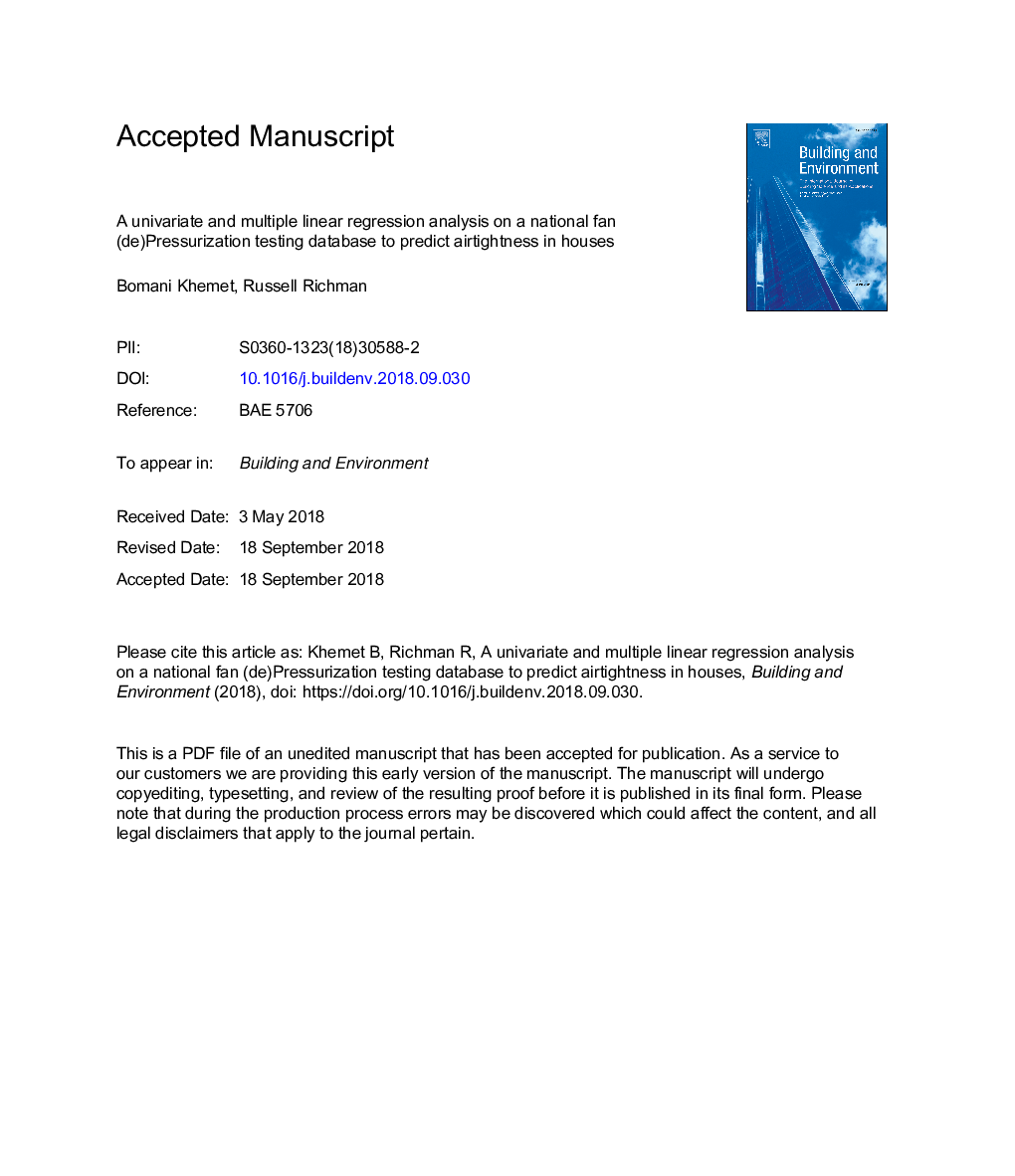| Article ID | Journal | Published Year | Pages | File Type |
|---|---|---|---|---|
| 11024272 | Building and Environment | 2018 | 23 Pages |
Abstract
A detailed study of a large national airtightness database was undertaken. Univariate analyses and multiple linear regression based on air change rate and normalised leakage was performed. Univariate analyses revealed important regional and national airtightness trends. Equations predicting pressurised air leakage were developed based on Canadian homes at the pre-retrofit stage. This data set contained homes in 11 of 13 of provinces/territories throughout Canada. Air leakage was examined by building jurisdiction, overall building height, building volume, build date, heating degree days, and enclosure insulation levels. Pearsons correlation coefficient for 3-variable models were moderate in strength explaining 32%-35% of the variability in both the ACH and NL based air leakage metrics respectively. Improvement in model strength was demonstrated using a 330,000 home dataset in conjunction with an 8-variable model. The 8-variable model raised the explanatory power between 46% and 48% for the ACH and NL metrics respectively. The study established a potential lower bound for future regression based airtightness prediction models across Canadian households.
Keywords
Related Topics
Physical Sciences and Engineering
Energy
Renewable Energy, Sustainability and the Environment
Authors
Bomani Khemet, Russell Richman,
